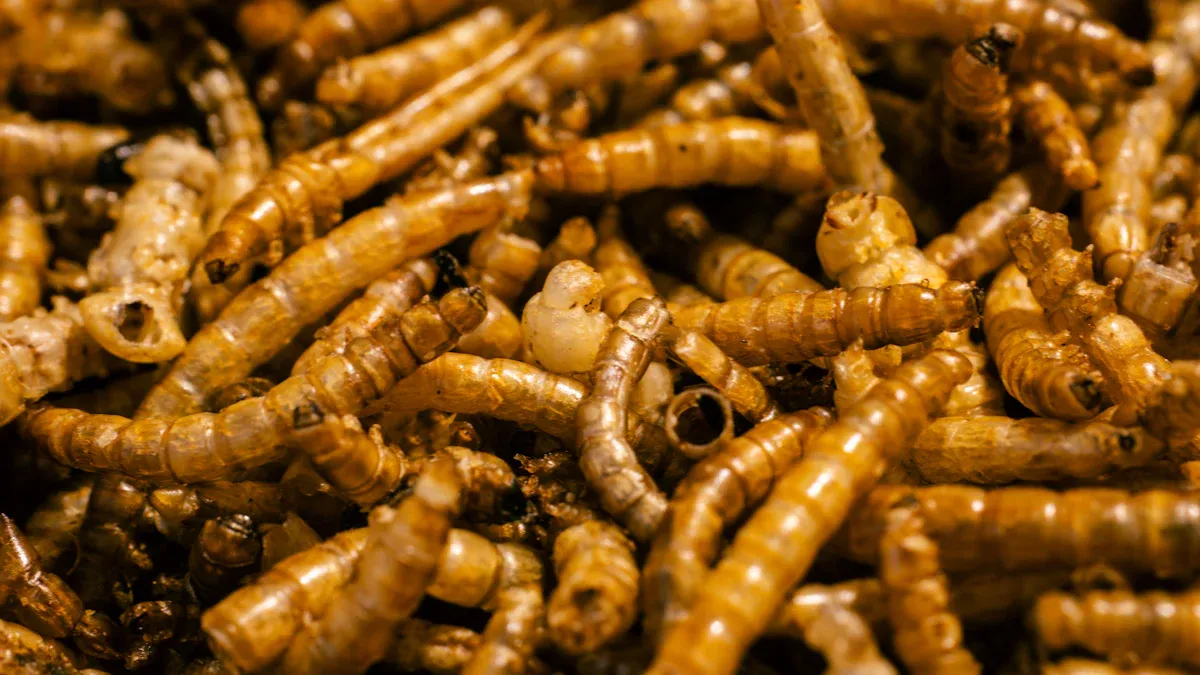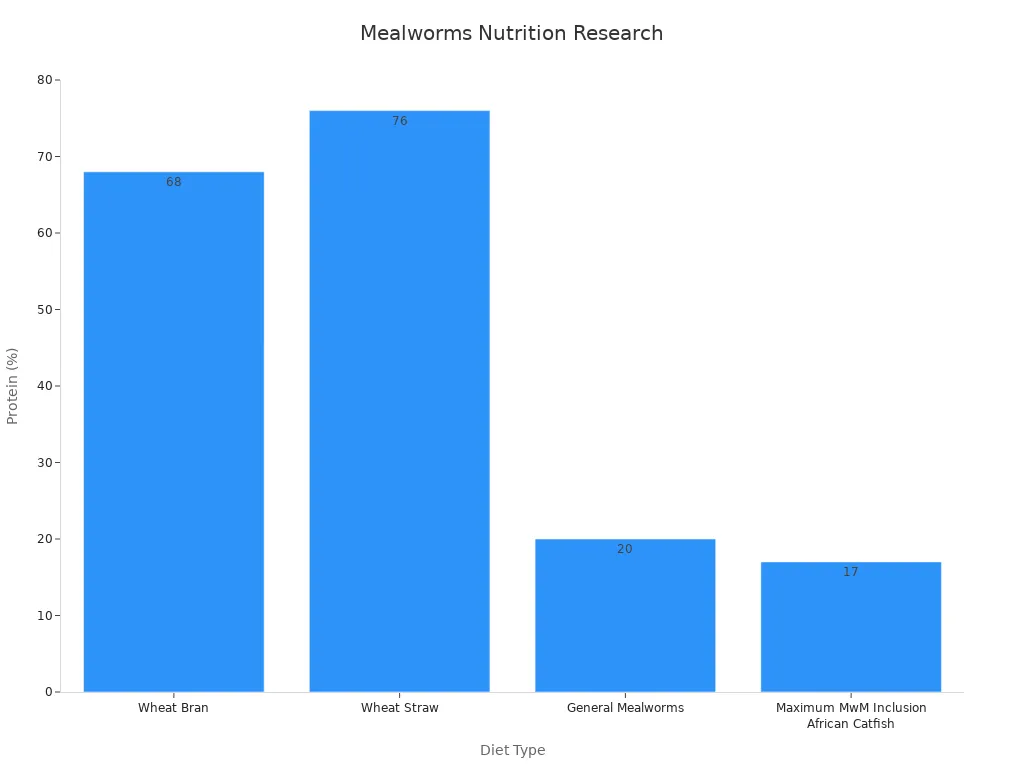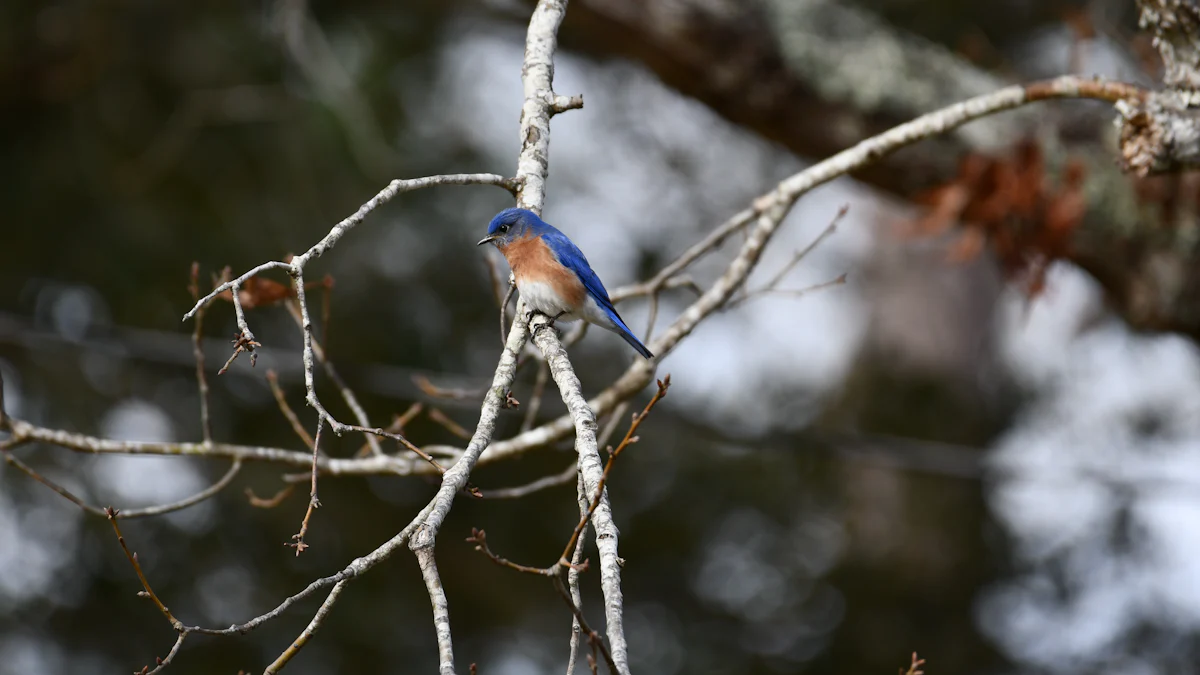
Have you ever wondered what makes pet mealworms such a game-changer for your pets and aquaculture species? Plus, experts found their protein content rivals traditional animal proteins. That’s impressive, right?
Key Takeaways
- Mealworms approved by the EU and FDA are safe and high-quality for pets and fish.
- Dried mealworms are full of protein and key nutrients. They help pets and fish grow strong and stay healthy.
- Using mealworms is eco-friendly. They need fewer resources and harm the environment less than regular farm animals.
What Makes Pet Mealworms EU-Compliant and FDA-Certified?
Definition of EU compliance for mealworms
When you hear “EU compliance,” you might wonder what it really means for pet mealworms. Simply put, it ensures that these mealworms meet strict European Union standards for safety, quality, and sustainability. The EU has clear rules about how insects like mealworms are raised, processed, and packaged. These rules cover everything from the type of feed used to raise the mealworms to the cleanliness of the facilities where they’re processed.
For example,mealworms must be fed only approved materials, like plant-based feed, to avoid contamination. The facilities must also follow hygiene practices that prevent harmful bacteria or other risks. By meeting these standards, pet mealworms become a safe and reliable choice for your pets or aquaculture needs.
Importance of FDA certification for safety and quality
FDA certification takes things a step further by ensuring that pet mealworms are safe for consumption in the United States. This certification means the mealworms have been tested and approved based on strict guidelines. It guarantees that they’re free from harmful substances and meet nutritional standards.
Why does this matter to you? It gives you peace of mind. You know the mealworms you’re using are not only nutritious but also safe for your pets or aquaculture species. Plus, FDA certification shows that the product has been thoroughly evaluated, making it a trustworthy option for anyone looking to provide high-quality nutrition.
Nutritional Benefits of Pet Mealworms
Key nutrients in dried mealworms
Dried mealworms are packed with nutrients that make them a powerhouse for your pets and aquaculture species. They’re rich in protein, healthy fats, and essential minerals. In fact, a study from Maastricht University found that mealworm protein contains all nine essential amino acids. These amino acids are crucial for muscle growth and repair, making mealworms a high-value protein source. The study even showed that mealworm protein is as effective as milk protein in promoting muscle synthesis. Pretty impressive, right?
Here’s a quick breakdown of what dried mealworms offer compared to traditional feeds:
| Nutrient | Dried Mealworms (Control Diet) | Traditional Feeds (General) |
|---|---|---|
| Moisture | 72% | Varies |
| Ash | 5% | Varies |
| Lipid | 19% | Varies |
| Protein | 51% | Varies |
| Chitin | 8% | N/A |
| Non-fiber Carbohydrate | 18% | Varies |
| Dominant Fatty Acid | Oleic Acid (30-60%) | Varies |
| Mineral Content | Comparable with literature | Varies |
As you can see, dried mealworms are a nutrient-dense option that stands out from traditional feeds.
Benefits for pets and aquaculture species
So, why should you consider pet mealworms for your furry friends or aquaculture species? First, their high protein content supports growth and muscle development. For pets, this means stronger muscles and better overall health. For aquaculture species, like fish, mealworms provide the energy needed for optimal growth and reproduction.
Research also shows that mealworms can be included in the diet of African catfish at up to 17% without affecting their growth. This makes them a sustainable and effective protein source for aquaculture.

Plus, mealworms are easy to digest. Their nutrients are absorbed efficiently, ensuring your pets and aquaculture species get the most out of their diet. Whether you’re feeding a playful pup or raising fish, pet mealworms are a fantastic choice for boosting nutrition.
Applications in the French Aquaculture and Pet Industries
Use of mealworms in aquaculture
Mealworms are making waves in the French aquaculture industry. Their high protein content and digestibility make them an excellent choice for fish and other aquatic species. You might wonder why they’re so popular. Well, mealworms help improve growth rates and feed efficiency. This means fish grow faster and healthier while consuming less feed. That’s a win-win for both farmers and the environment.
In France, aquaculture producers are turning to mealworms as a sustainable alternative to traditional fishmeal. Fishmeal often relies on overfished species, but mealworms are farmed in controlled environments. This reduces pressure on marine ecosystems. Plus, mealworms are versatile. They can be included in the diets of various species, from trout to catfish, without compromising nutritional value.
Use of mealworms in pet food
Pet mealworms are also gaining traction in the pet food market. Health-conscious pet owners in France are looking for nutritious and eco-friendly options, and mealworms fit the bill perfectly. They’re packed with protein, healthy fats, and essential nutrients that support your pet’s overall health. Whether you have a dog, cat, or even a bird, mealworms can provide the nutrition they need to thrive.
What’s more, mealworms are hypoallergenic. If your pet has food sensitivities, mealworms could be a great alternative to common allergens like chicken or beef. They’re also easy to incorporate into pet food, whether as a primary ingredient or a tasty treat. With their growing popularity, you’ll likely see more pet food brands adding mealworms to their recipes.
The French market for mealworms is booming, especially in aquaculture and pet food. Their sustainability, nutritional benefits, and versatility make them a smart choice for both industries.
Sustainability and Environmental Impact of Pet Mealworms

How mealworms contribute to sustainable practices
Pet mealworms are a shining example of sustainability in action. Their production requires fewer resources compared to traditional livestock. For instance, mealworms need less land, water, and feed to thrive. This makes them an eco-friendly choice for pet food and aquaculture industries. You’re not just feeding your pets or fish; you’re also helping the planet.
Mealworms also produce fewer greenhouse gases. A study comparing mealworm production to organic broiler production found that mealworms have 18-72% lower impacts across categories like global warming potential (GWP) and non-renewable energy use (NREU). Check out this table for a closer look:
| Impact Category | Mealworm Production (1 kg) | Comparison with Organic Broiler Production |
|---|---|---|
| GWP (kg CO2-eq) | 20.4 | 18-72% lower impacts per category |
| NREU (MJ-eq) | 213.66 | 18-72% lower impacts per category |
| ALOP (m²) | 22.38 | 18-72% lower impacts per category |
| TAP (g SO2-eq) | 159.52 | 18-72% lower impacts per category |
| FEP (g P-eq) | 12.41 | 18-72% lower impacts per category |
Mealworms also contribute to sustainable aquaculture practices. Studies show that including mealworms in fish diets improves growth rates and feed efficiency. This means fish grow faster while consuming less feed, reducing waste and resource use.
Environmental benefits of using mealworms
Switching to pet mealworms can significantly lower your environmental footprint. Compared to traditional livestock, mealworms emit far less CO2 and require much less land. For every 100 grams of protein produced, mealworms generate only 14 kg of CO2 emissions, while livestock emissions can be up to 14 times higher. They also use just 18 m² of land per 100 grams of protein, which is a fraction of what livestock needs.

Mealworms are also versatile. They can be farmed in controlled environments, reducing the strain on natural ecosystems. By choosing mealworms, you’re supporting a sustainable food source that minimizes environmental harm. It’s a small change that makes a big difference.
EU-compliant dried mealworms bring you peace of mind with their FDA certification. They’re packed with nutrients, making them a fantastic choice for pets and aquaculture species. Their growing use in France highlights their versatility and sustainability. By choosing pet mealworms, you’re supporting a nutritious and eco-friendly solution for the future. 🌱🐾
FAQ
1. Are dried mealworms safe for all pets?
Yes! Dried mealworms are safe for most pets, including dogs, cats, birds, and reptiles. Always check with your vet for specific dietary needs. 🐾
2. How should I store dried mealworms?
Store them in a cool, dry place in an airtight container. This keeps them fresh and prevents moisture from spoiling them.
Tip: Refrigeration can extend their shelf life! ❄️
3. Can mealworms replace traditional protein sources?
Absolutely! Mealworms are a sustainable and nutritious alternative to traditional proteins like chicken or fish. They’re packed with essential amino acids and healthy fats. 🌱


